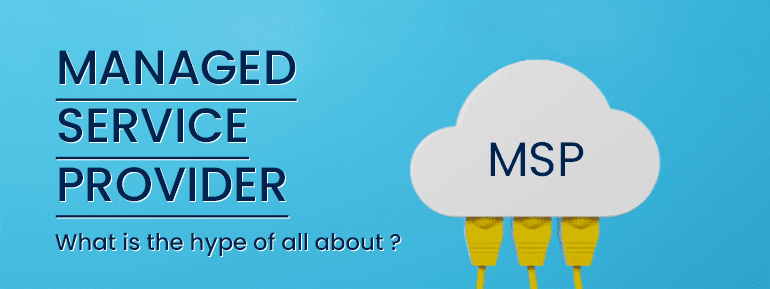What is Managed Service Provider (MSP)?
A managed service provider is a third party that provides services. A managed IT service provider is typically an IT service provider that manages and assumes responsibility for providing a defined set of business technology services to its clients, either proactively or as needed by the MSP (not the client).
The managed service provider is in charge of the service or equipment’s functionality, which is governed by a service level agreement (SLA). The SLA will cover standard downtime, disaster recovery, technical support, and help desk operations. A monthly subscription fee is frequently charged to the customer receiving the service.
In order to improve operations, cut costs, and streamline IT management, organizations outsource the responsibility of maintaining and anticipating the IT needs for a variety of processes and functions.
What Are the Advantages of Utilising Managed IT Services?
Managed IT services benefit both large and small organizations, as well as new and established businesses. The following are some of the advantages of using managed services:
Bridging The Skills Gap
Managed services can be beneficial for teams that lack the time, skills, or experience to manage certain business functions internally, or who prefer to focus their efforts on other initiatives. Using an expert to provide a service allows your teams to focus on innovation rather than routine tasks.
Saving Money
Many managed services are dependent on variable cloud costs. These services can help you save money on personnel and training. Other managed services are typically priced as a fixed monthly charge. Using a managed service provider instead of building in-house IT operations can be less expensive and more predictable, which is beneficial for budgeting.
Reliability
You can relax about outages because the managed service provider is responsible for ensuring that the service is always available. Services and IT support are provided in accordance with an SLA, so customers know what to expect and when to expect it. An in-house IT team is frequently juggling multiple responsibilities, whereas an MSP can concentrate on perfecting their specific service delivery. This entails focusing on the service’s health and security, as well as applying patches and upgrades as needed.
What Types of Managed IT Services Are There?
Depending on your requirements, managed IT services can range from general to specific. Monitoring and maintenance of equipment, IT system management, remote monitoring and management of servers, network monitoring, and other support services are examples of common services.
The traditional approach to managed services is a break/fix model that monitors systems until a problem arises that must be resolved. Many modern managed service providers practice proactive maintenance and management, which may include patch management and predictive maintenance.
Cloud-based managed services can range from specific applications delivered “as a service” (SaaS) to platforms and infrastructure as a service (IaaS and PaaS). These services can assist businesses in rapidly scaling to meet rising demand without incurring the associated data center and IT infrastructure costs. Cloud-based services can also improve data, analytics, and storage access.
Other businesses offer managed security services for traditional bare metal infrastructure as well as cloud services. Having dependable and trustworthy security experts is especially important for businesses that use hybrid cloud infrastructure.
If you have doubts, questions or queries feel free to contact us at +61 3 9005 6868 or Email Us at hello@techomsystems.com.au Feel free to reach us anytime, we will be happy to serve you
Technology Adoption Expert | TECHOM Systems Pty Ltd
Helping technology adoption faster than ever before. Authoring modern workplace technologies like Microsoft Teams, Microsoft Intune, Azure Cloud Services, and Emerging Security Solutions.













